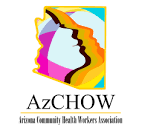A Fox News commentator that goes by the name of Tucker something created a bunch of controversy last week when he repeatedly claimed that CDC will be requiring the COVID vaccine for school attendance, which if course is preposterous. Vaccine requirements for school attendance is a decision that is made by states, not the CDC.
He based his claim on CDC’s Advisory Committee on Immunization Practices statement last week that they’re recommending updates to the CDC’s childhood and adult immunization schedules to include COVID19 vaccine boosters (which has nothing to do with requiring the vaccine for school attendance).
Vaccination requirements for school attendance are set by the ADHS under statutory authority in 15-871, 15-872, 15-873, and 15-874 which gives ADHS rulemaking authority to establish the list of required vaccines – which are posted in the AZ Administrative Code in R9-6-702.
What updating the recommended vaccine schedule does do is help clinicians by streamline clinical guidance for healthcare providers by including all currently licensed, authorized and routinely recommended vaccines in one document.
See the current recommended CDC vaccine schedule: Immunization Schedules | CDC
ACIP meets 3 times each year to discuss vaccine recommendations. They consider:
- How safe and effective the vaccine at a specific age
- The severity of the disease the vaccine prevents
- How many people get the disease if there is no vaccine
- How well the vaccine helps the body produce immunity to the disease
The final vaccine recommendations include:
- Number of doses of each vaccine,
- Timing between each dose,
- Age when infants and children should receive the vaccine, and
- Precautions and contraindications (who should not receive the vaccine).
CDC sets the immunization schedules based on ACIP’s recommendations. The childhood and adolescent schedules are also approved by the American Academy of Pediatrics, the American Academy of Family Physicians, and the American College of Obstetricians and Gynecologists.
CDC wrote last week in a media release that the new guidance will be published in early 2023. CDC will continue to update and work with health departments, providers, and other partners over the coming months to ensure a smooth transition of the COVID-19 vaccination program from emergency response to a routine immunization program activity.






